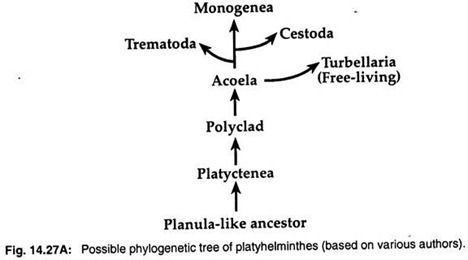ADVERTISEMENTS:
Chloroplast Transformation in Plants!
The chloroplasts (plastids) and mitochondria are believed to have evolved from prokaryotes during the course of evolution.
Both these organelles have their own genome, although it is much simpler when compared to nuclear genome. Further, many of the proteins that function in chloroplasts and mitochondria are encoded by nuclear genes- and then transported to the organelle.
Chloroplast Genome:
ADVERTISEMENTS:
Most of the higher plants have about 100 chloroplasts per leaf cell. Each chloroplast contains approximately 100 copies of chloroplast DNA genome. The chloroplast genome (the plastome) is a circular double-stranded DNA molecule (or chromosome) located in the stroma. Majority of chloroplast genomes are in the size of 120-1 60 kbp and contain about 120-140 genes. About 100 chloroplast genes are known to code for proteins. The protein synthesis in chloroplasts resembles that of prokaryotes.
Chloroplast Engineering:
Genetic engineering of chloroplast that leads to chloroplast (plastid) transformation is an important and exciting field in modern biotechnology as it offers the following advantages:
1. Chloroplasts are maternally inherited; hence there is no danger of gene transfer through pollen to related weeds. This is because pollen does not contain transgenes.
2. Multi-gene transfer can be conveniently carried out in chloroplasts which is rather difficult with nuclear genome.
ADVERTISEMENTS:
3. Chloroplasts genome is functionally comparable to prokaryotic genome. A single promoter can control the expression of group of genes (transgenes). It is therefore possible to introduce desirable multiple genes which can be expressed under the control of a single promoter.
4. High level of transgene expression is possible with chloroplasts. There are about 100 chloroplasts per cell, each containing about 100 copies of genome. Thus, there is possibility of 10,000 copies of transgenes per cell! This is a tremendous number of transgenes carried by transformed chloroplasts. There is a tremendous potential for a very high level of gene expression and large scale production of active proteins.
5. Chloroplast transformation is not associated with gene silencing which is a major problem with nuclear genome transformation.
6. Antibiotic resistance genes need not be used as selectable markers. Even if used, they can be easily excised.
7. Toxicity associated with foreign protein production in chloroplasts is much less when compared to nuclear-controlled foreign proteins.
Design of Vectors for Chloroplast Transformation:
A diagrammatic representation of two vector constructs for chloroplast transformation is depicted in Fig. 49.13.
1. A construct for expression of a single gene:
The vector for chloroplast transformation is based on the selectable marker gene aadA that provides resistance to antibiotic spectinomycin. The single foreign (desirable) gene is fused to regulatory sequences (promoter and terminator) which in turn is flanked on either side by chloroplast DNA (Cp DNA) (Fig. 49.13A).
ADVERTISEMENTS:
2. A construct for expression of multiple genes:
In this case, -the selectable marker is the betaine-aldehyde dehydrogenase (badh) gene. It is flanked by a promoter and the multiple transgenes are flanked by a terminator. At both ends chloroplast DNA sequences are present. In between the transgenes, these are ribosome-binding sites (one between two transgenes) to ensure efficient translation (Fig. 49.13B).
Introduction of Foreign Genes into Chloroplast Genome:
Most of the methods used for introducing the foreign genes into nuclear genome are not useful for chloroplast transformation. The most successful method for inserting foreign genes into chloroplasts is particle gun bombardment.
After the bombardment, homologous recombination occurs between the chloroplast DNA sequences on the vector and those of on the genome. This is a site-specific integration and thus avoids the frequent problems associated with random insertion of foreign genes into nuclear genome. The regenerated plants derived from the modified plastome (chloroplast genome) are regarded as transplastomic plants.
The Future of Chloroplast Transformation:
ADVERTISEMENTS:
The technology of chloroplast transformation is in the developing stages. In fact, it has not become as routine as transformation of nuclear genomes of plants. Chloroplast engineering, however, holds a great promise in plant biotechnology being an efficient, clean and environmental-friendly approach for the production of transgenic plants.

